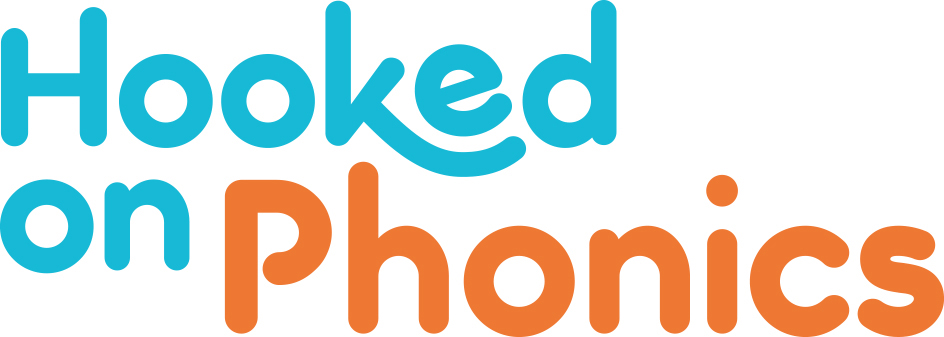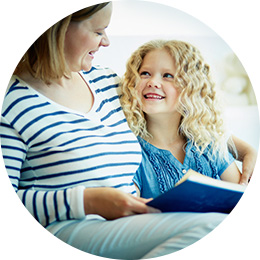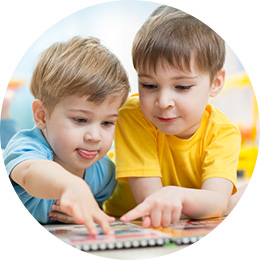Phonics, Fluency, Vocabulary, Comprehension: The ABCs of Learning to Read in Kindergarten
September 22, 2015

Sending your little one into that kindergarten classroom is a huge step—for both of you! Much of this year will be about learning how to be a student. That means how to work together in the classroom, how we act in school and in groups, and of course, how to build a strong foundation for reading. All this change can be tough on your child. Spending time reading together can help you reconnect and give you both opportunities to share your feelings and experiences during this transition. Learning to read is a huge job and it involves several key parts. Here’s an overview of what goes into the process, and how you can help your 5- to 6-year-old grow as a reader during kindergarten.
Here are the 14 things that your kindergarten child needs to know to learn to read:
- Hears and identifies sounds at the beginning, middle, and ends of words (“What sound do you hear at the beginning of lap?” “Llll!”) Be sure to say the sound of the letter rather than its name when talking with your child about this idea. In this example, you would say the lll sound rather than the name of the letter L.
- Thinks of other words with the same beginning or ending sound. (“Can you think of other words that end with the zzz sound? How about fizz, buzz . . .” Then let your child brainstorm.)
- Understands words are made up of different sounds that come together and be able to separate them. (“Man has three sounds—‘mmm, aaa, nnn.’”)
Phonics
- Identify all letters and their sounds. (For the vowels, it’s fine for your child to focus on one of the sounds the letter can make, such as A says “a” as in at; but you can start talking about the long vowel sounds, too. A can also say its name, “aye” as in ate.)
- Begin to understand that letters join together to make words. (“First, I see an N. That’s nnn. And then an O… ohhh. That’s nnn… ohhh… no!”)
- Write letters, beginning to form some words. (Don’t worry—the spelling probably won’t be solid for another year or two!)
Fluency
- Your child is probably putting some of the pieces into place to become a fluent reader—but is not there yet. This is completely normal for a kindergartener! Keep practicing and give it time.
Vocabulary
- Your child is learning new words every day.
- Kindergarteners should be able to explain their ideas in-depth when they are speaking through detailed, complete sentences.
- Understanding of figures of speech is just beginning. (For example, when we say, “It’s raining cats and dogs!” we don’t mean that cats and dogs are actually falling from the sky.)
Comprehension
- Ask and answer questions about stories that are read out loud.
- Make predictions about a story based on the title, cover illustration, and the first few pages.
- Begin to make connections within a book—with your help. (“People have to drink water to live. So do plants!”)
- Understand the main idea of a story. (“Clifford felt really sad when Emily Elizabeth went to school. But he was even happier when she came home and told him what she learned!”)
Phonemic Awareness
Phonemic awareness is the knowledge that spoken words can be broken apart into smaller chunks of sound. These units of sound are called phonemes. Here’s an example: the word bat is made of three phonemes: the sounds /b,/ /a,/ and /t./ When kids know that these three sounds are part of the word bat, they are showing that they have phonemic awareness.
- Reading stories out loud with lots of rhyming words helps build phonemic awareness. The Bright & Early Books from Dr. Seuss and his friends are perfect introductory rhyming books for this age group.
- Play rhyming games and sing silly rhyming songs. Kids this age love a wacky twist on an old favorite. (“Twinkle, twinkle, little cat, how I wonder if you wear a hat.”)
- Talk about letter sounds and blends (“What sound do you hear at the beginning of Cheerios?’ It’s ‘ch’—the /c/ and the /h/ work together to make a ‘ch’ sound!”)
Phonics
Phonics connect the knowledge of sounds (also called phonemes) to letter symbols. Here’s an example: The letter X looks like “X” and makes the sound “ks.”
- Encourage your child to sound out short words that follow phonics rules.
- Keep talking about the letters and sounds you see in your everyday life together. (“See that stop sign? What letter does the word stop start with? What sound does the letter S make? How does the T work with the S?”)
- When you’re reading to your child, use your finger to track the words as you read them.
- Encourage your child to read one or two words she knows as you read out loud to her. (You might have her watch for the sight words I and me, for example, and prompt her to read them when you reach them. Robert Lopshire’s Beginner Book Put Me in the Zoo is a great way to
help children learn to read the sight word, zoo.) - Keep it fun and make a big deal about it when she succeeds. If she’s frustrated or is struggling, let it go for now köpa priligy.
Fluency
Fluency is the ability to read words smoothly, at a good pace, and with expression. Here’s an example. If a character is very excited, the reader’s voice should sound excited, too. The child should not have to stop to sound out each word; the words should flow smoothly.
- Read out loud to your child as much as possible!
- Make your voice match the feeling of the story to show your child how it sounds to read with expression. Bring your personality to your reading—it makes it more fun for both of you.
- As your child begins to read more words with more confidence, you can trade off pages as you read out loud together. This will balance her own practice with hearing you model what it sounds like to be a smooth, expressive reader.
Vocabulary
Vocabulary is the dictionary in your child’s mind. The more word meanings your child knows the larger her vocabulary.
- Talk with your child often and in a meaningful way. Help them learn new words about the world around them. (“You really look exhausted today! Do you know what exhausted means? It means really tired. You look exhausted and very tired today.”)
- Read to your child often. Research shows that children’s books expose kids to a much broader range of vocabulary words than they would otherwise hear in conversation. And there’s a direct link between the number of words a child goes into school knowing and how well that child does in school.
- Encourage your child to express himself clearly and completely. Ask him questions that will help him open up and explain his ideas in detail. The more he speaks, the stronger his vocabulary.
Comprehension
Comprehension is understanding what a story is all about. Here’s an example. Being able to identify the main characters in a story, talk about what they do and how they feel, and explain what happens during the beginning, middle, and end of a story are all important parts of reading comprehension.
- Read out loud to your child as much as possible!
- Talk with your child about what you are reading. Ask questions about the important things that are happening in a story, and help them make connections. (“Didn’t we read another story about cats last week? What do you remember from that book? I wonder if we will learn something new about cats from this one.”)
- Have fun with this process; don’t feel like you have to drill your child with questions on every page. Just have a conversation about the parts of the story you think are interesting.




